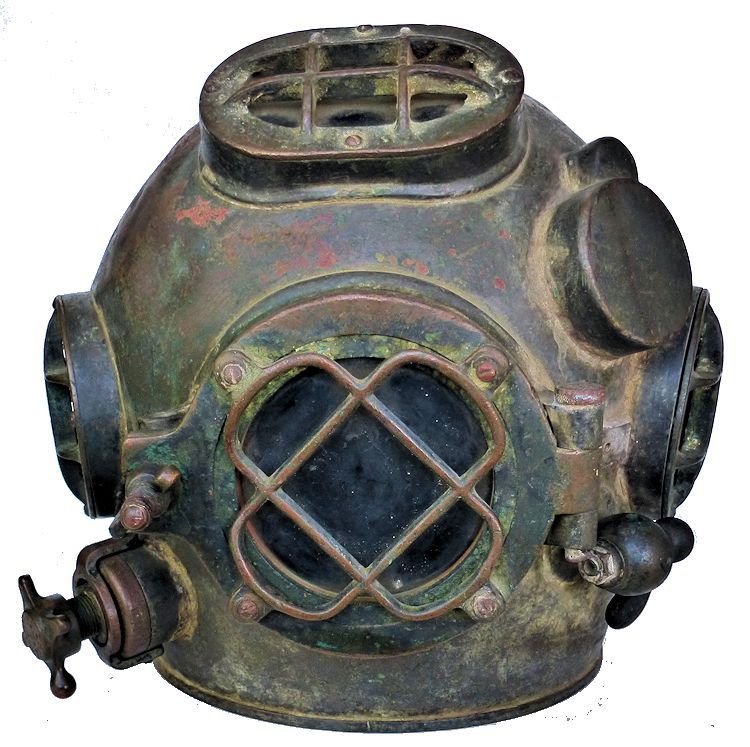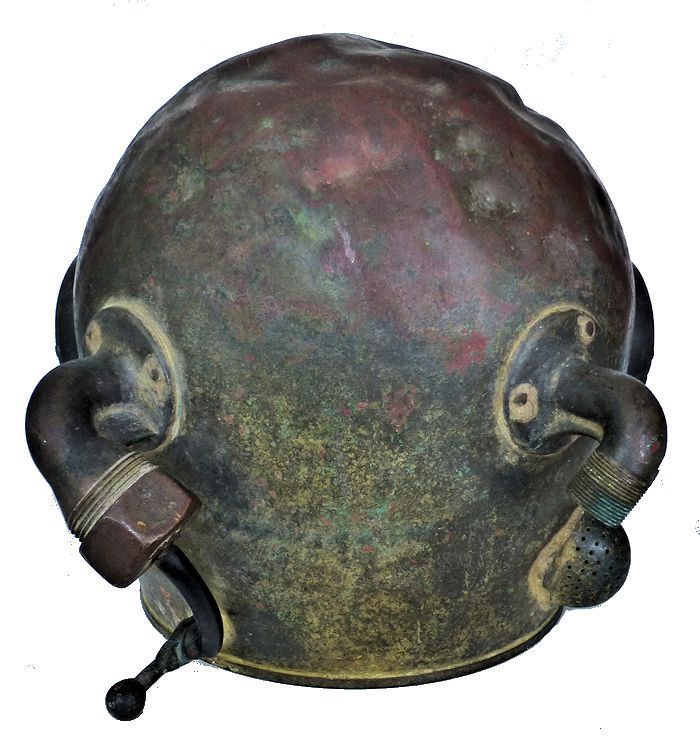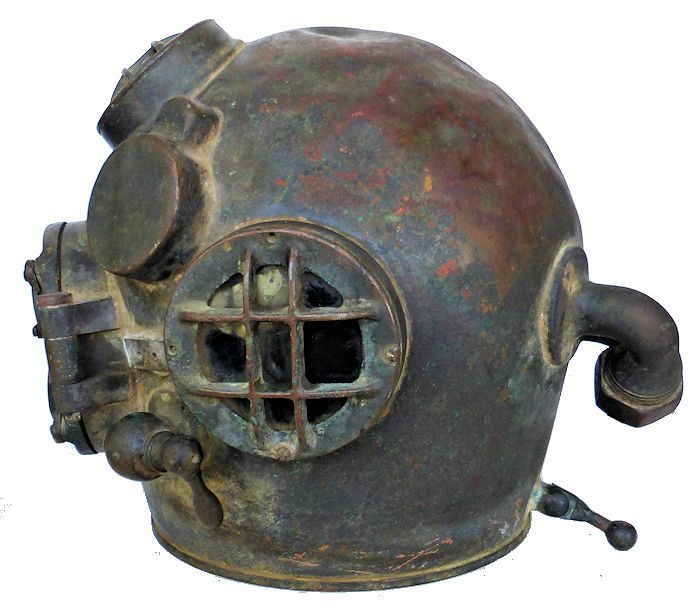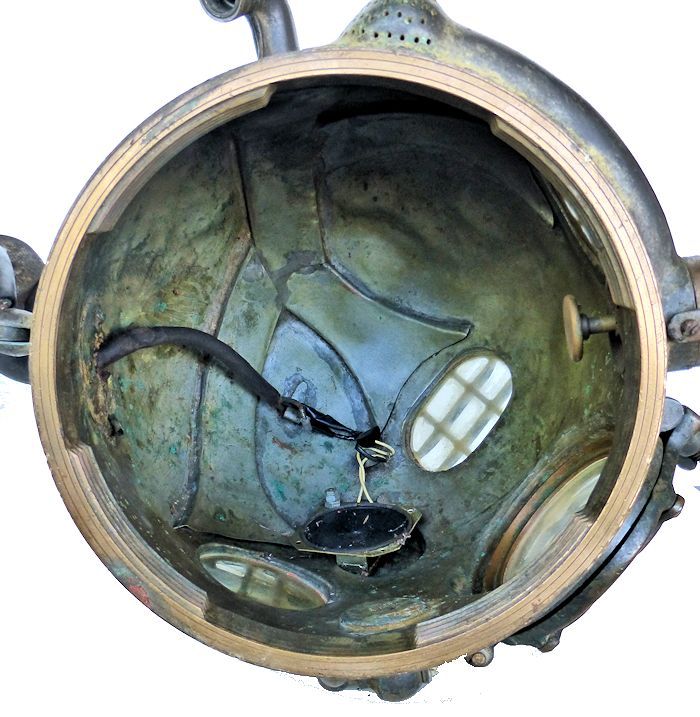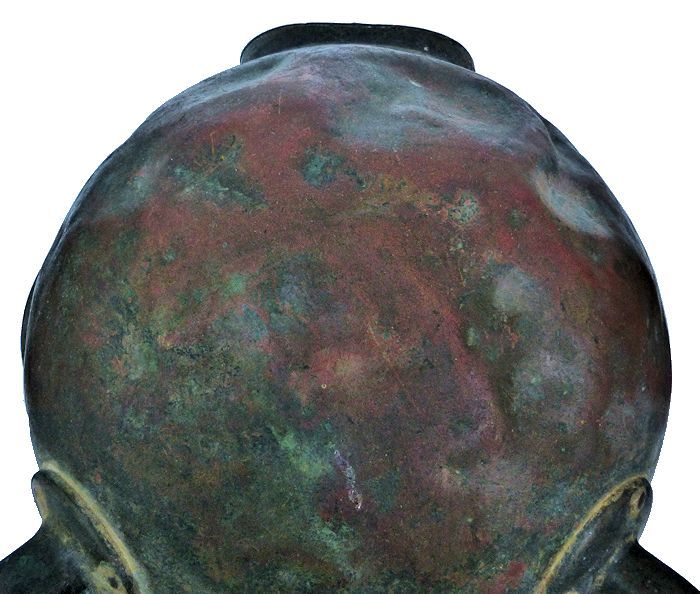Presented is a very rare Miller-Dunn MK V Navy Diving
Bonnet. It is without its breast plate which has been lost to the Sands of Time. This model MK V is the rarest of all
MK V helmets made by the three makers during WW II. The bonnet was last owned by a Pasadena, California, family and is
new to the market. It is in its state of last being dived and has dark blueish patina. There is no serial number on this bonnet. We have seen this before in MK V helmets that come from this
maker, the most notable of which is that of Murray Black’s MK V which we sold three years ago. See https://landandseacollection.com/id799.html
The proof that Miller-Dunn was
the maker of the bonnet is the special signature elbows with a cast gusset on their bottom, that were only used by them
during 1943 as shown directly below.
|
This picture shows the gussets on both elbows used only in 1943. Note dents on the crown.
|
Like all
used diving gear, this is being sold for DISPLAY ONLY. It should not be dived without having passed inspection by a certified
dive shop.
|
Right & Left side of Miller Dunn 1943 Navy MK V Bonnet
|
CONDITION: The
wing nut on the front door is frozen. The exhaust valve Star wheel turns the threaded shaft of its mount. The spit
cock handle is frozen. There is no microphone fitted. The chin button is in place and functions. There are some
fairly deep dents on the crown. Otherwise, the bonnet is in very good condition.
Like all used diving
gear, this is being sold for DISPLAY ONLY. It should not be dived without having passed inspection by a certified dive
shop.
|
|
Inside of 1943 Miller Dunn Navy MK V bonnet.
|
|
BRIEF HISTORY OF MILLER DUNN DIVING HELMETS: The Miami, FL. company was founded
by William S. Dunn and William F. Miller around 1914 with a focus on shallow water diving
using helmets and simple equipment that did not require special training. Its first helmet of consequence was the No 1 Divinhood
introduced around 1914, which was quickly adopted for use in all forms of light duty shallow water work. After 18 months in
process, in August ,1916, they were issued U.S. patent 1195793.
